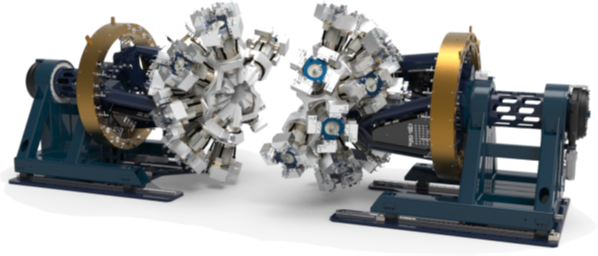Instruments Under Development
GRETA, about to be completed and readied for its inaugural use at FRIB, will transform how scientists explore—with unprecedented resolution—the inner workings of the short-lived rare isotopes only available at FRIB.

Led by Lawrence Berkeley National Laboratory and scheduled for phase-I completion in the summer of 2025, GRETA is on track to be the world’s most powerful gamma-ray reading instrument and well-positioned to obtain DOE CD-4A approval, which will allow GRETA operations to begin at FRIB.
Science it will enable
GRETA is a novel instrument for studying the properties of atomic nuclei through the precise measurement of γ rays that reveal the energies of properties of excited quantum states of nuclei. Optimized to reconstruct the energy and 3D position of γ-ray interactions within the germanium crystals, GRETA’s design innovates through the combination of full solid-angle coverage with high detection efficiency, excellent energy and position resolution, and background rejection capability through γ-ray tracking, to majorly contribute to a large fraction of the nuclear structure and nuclear astrophysics programs at FRIB.
GRETA will provide new insights into the nature of the nuclear force and will help decipher how the properties of rare isotopes connect to the fingerprints of element and isotope production in the universe.
In the summer/fall of 2025, GRETA will arrive at FRIB to be readied for experiments and will be available at a future PAC after it is operational at FRIB. It will first be offered for experiments at the S800 and ReA and in the future at the HRS.
Collaborations
Lawrence Berkeley National Laboratory led the GRETA project. Argonne National Laboratory, Michigan State University, and Oak Ridge National Laboratory contributed to its timing and trigger electronics, the detector characterizations, and γ-ray tracking, respectively.


